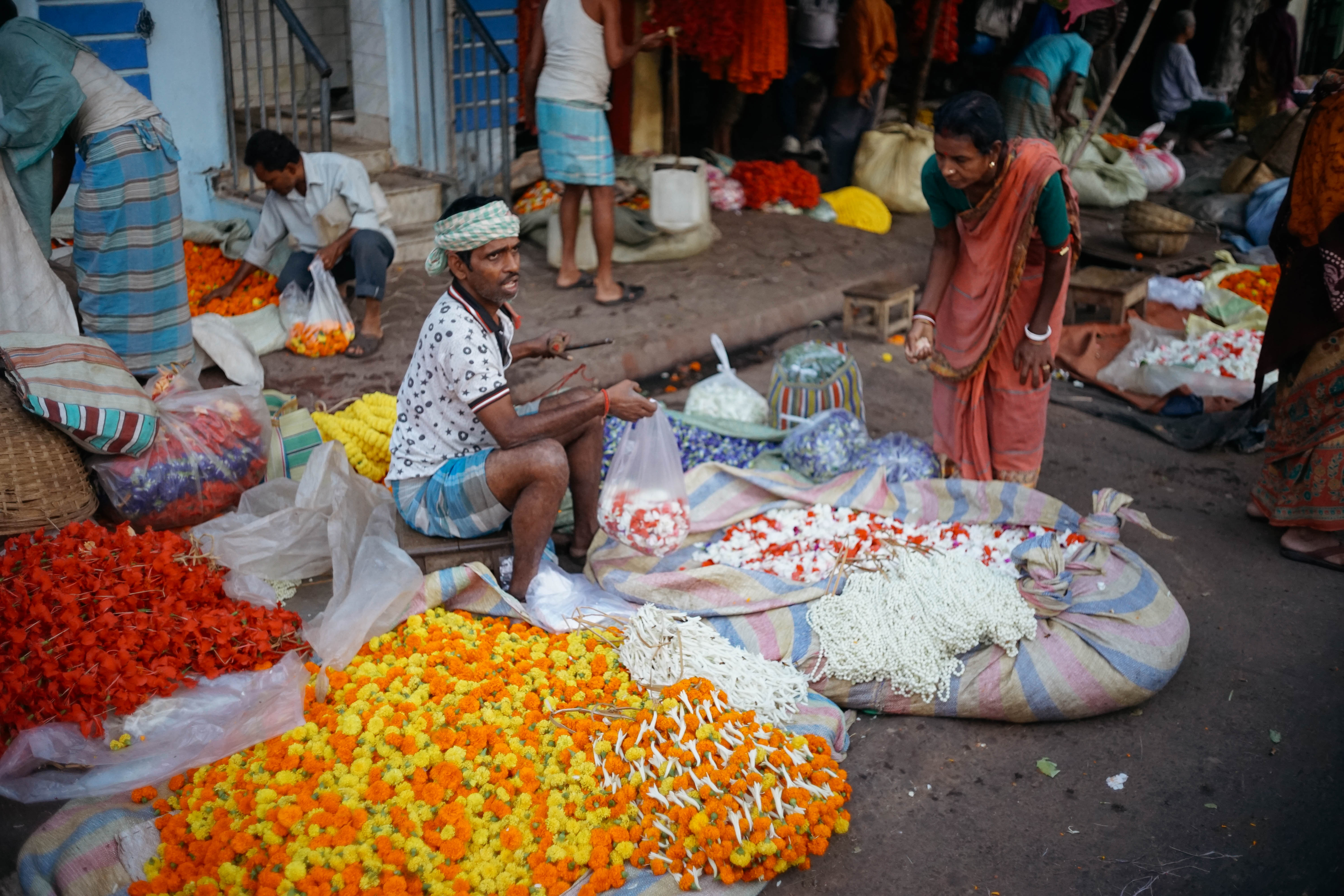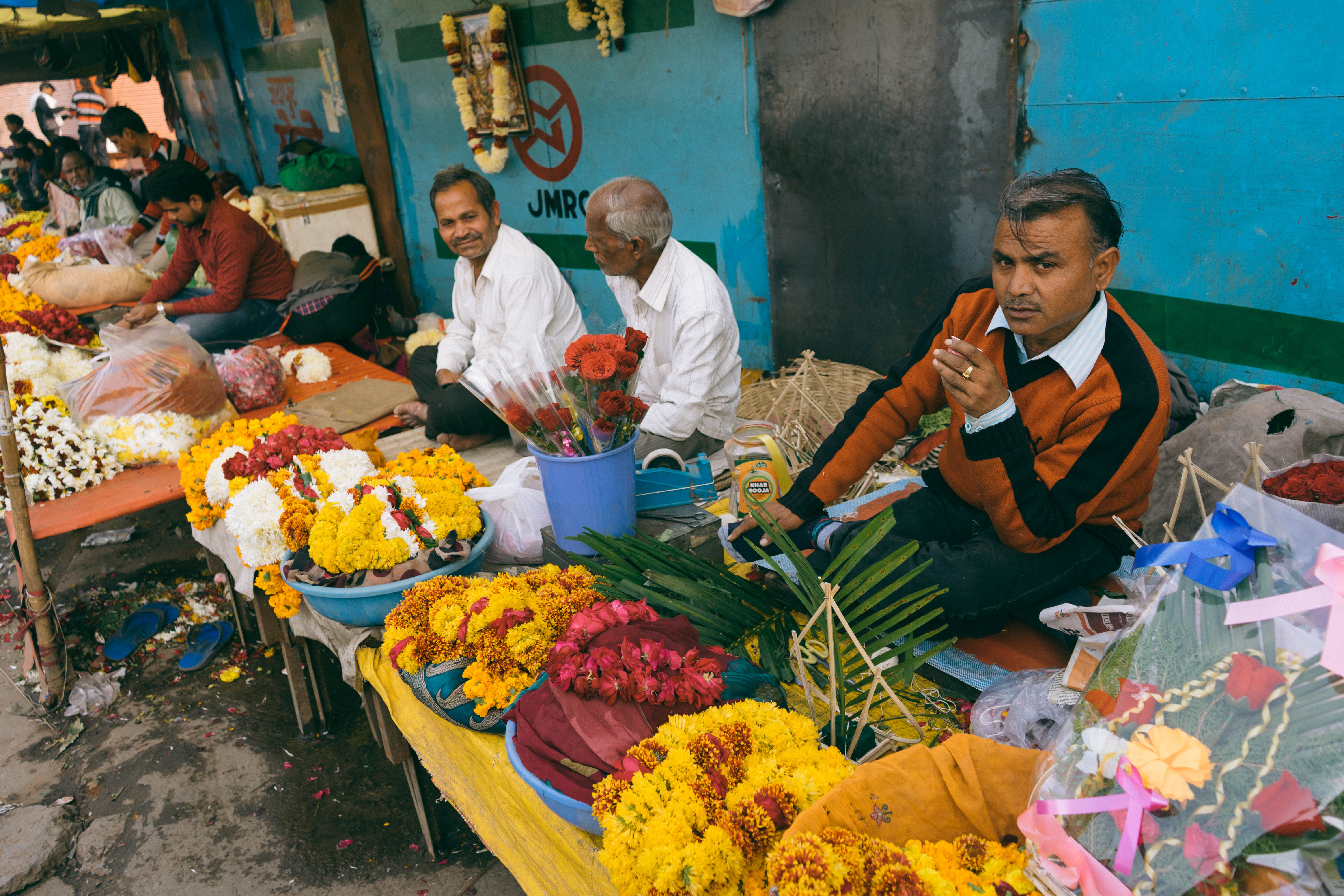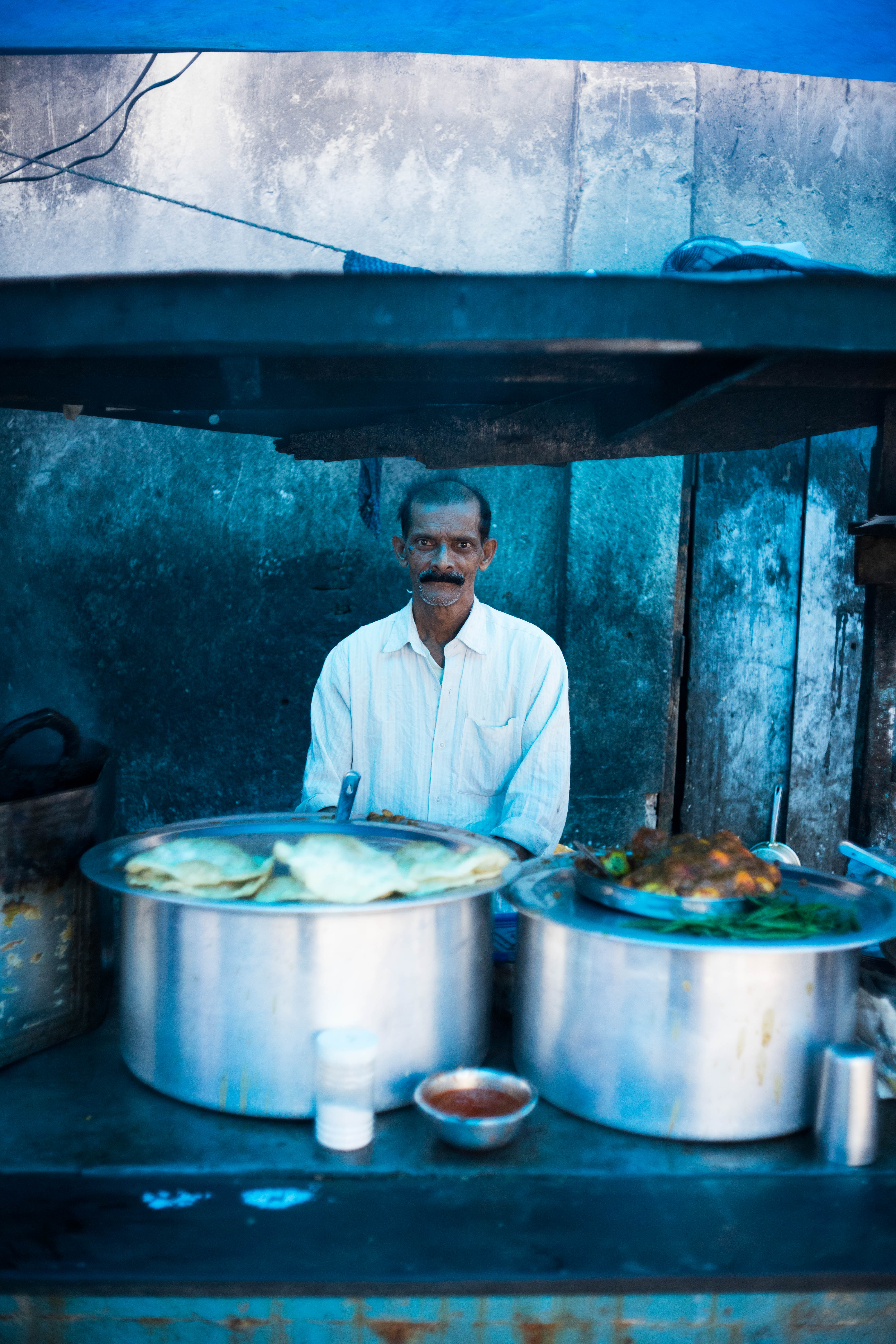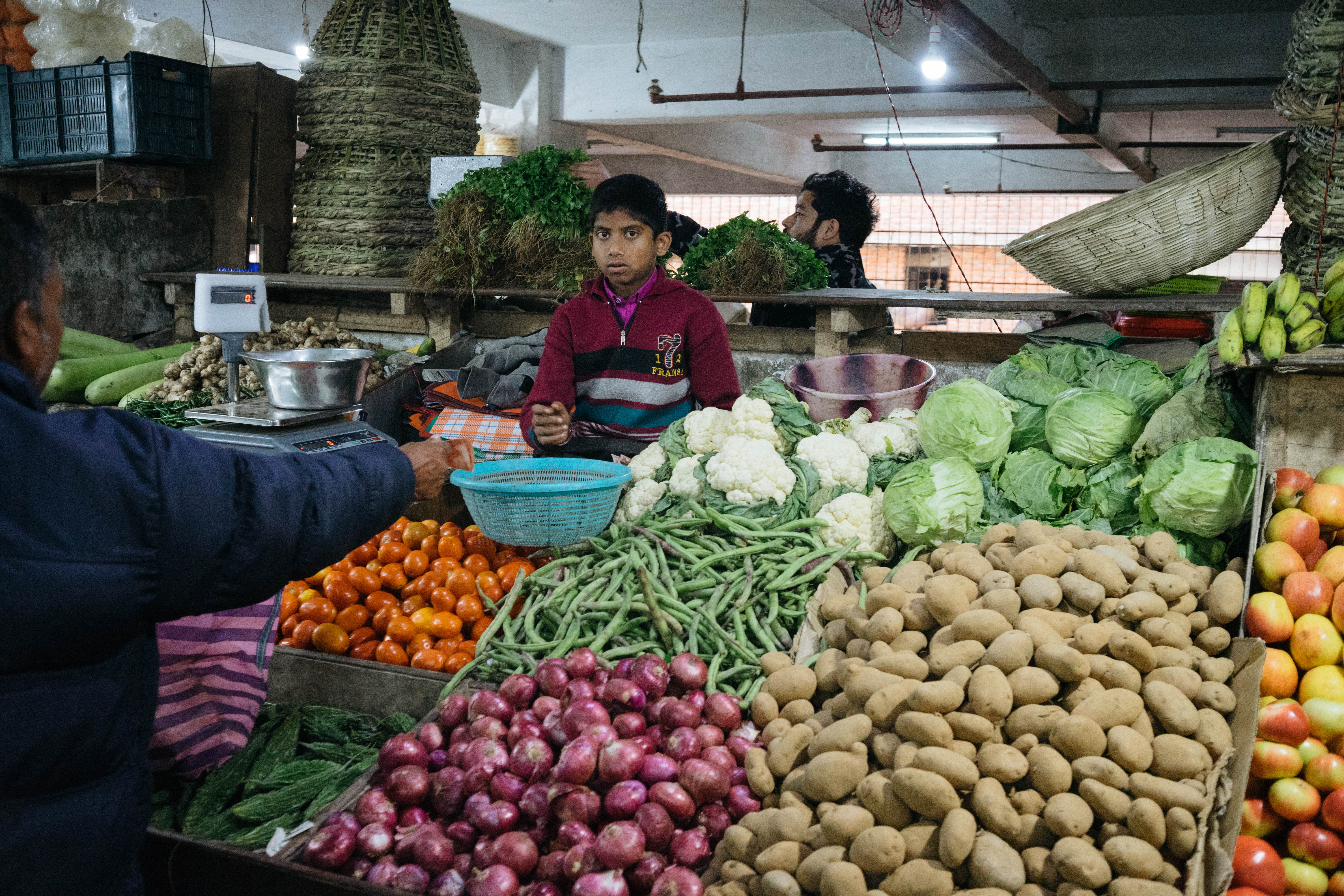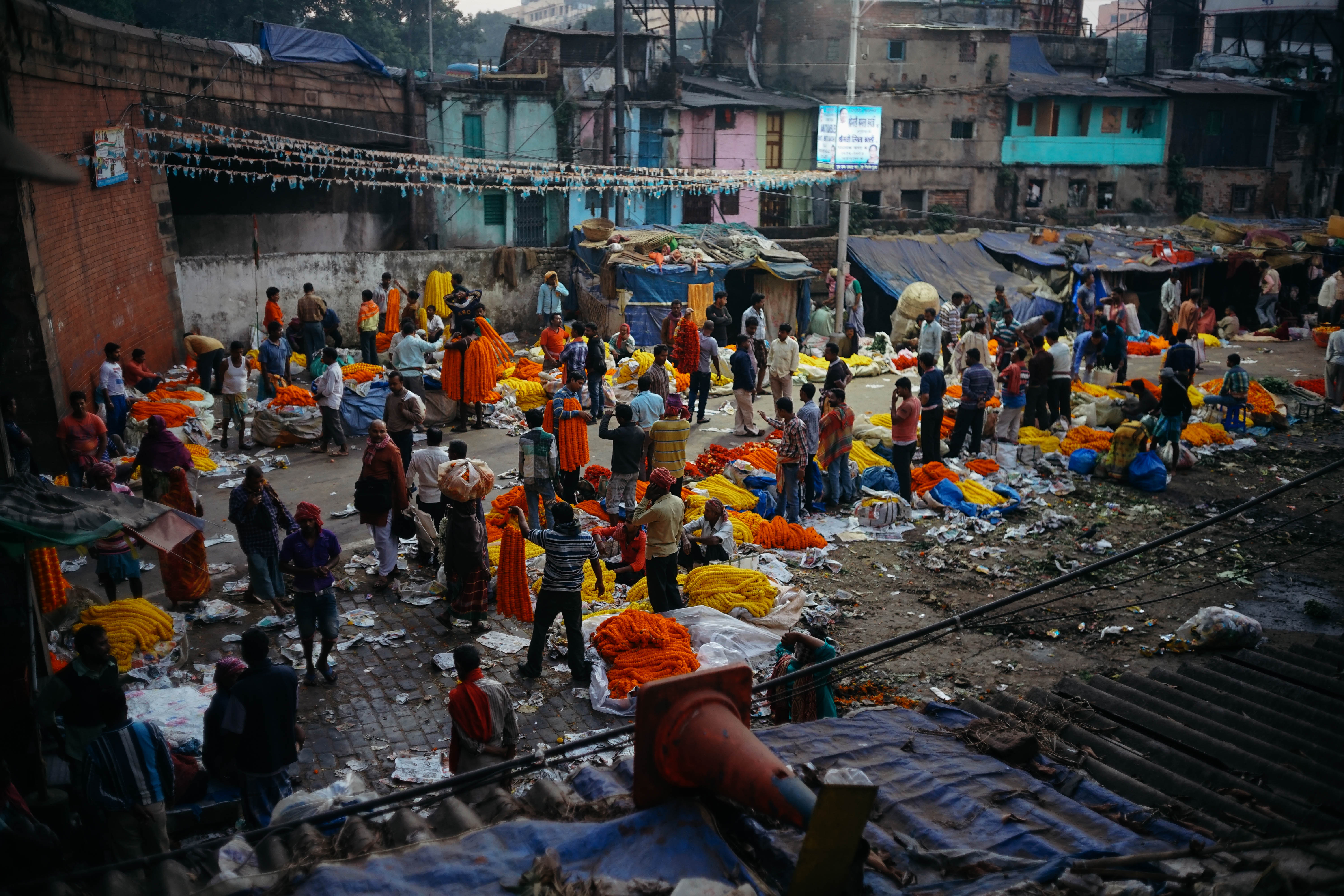
The Markets in India Are Dazzling
They’re busy, they’re dirty and they’re full of life—and death.
The Mallick flower market in Kolkata happens every day around the crack of dawn under a bridge—and I’ve gotta say theres nothing like it. People carrying giant bundles of beautiful flowers strung together into billowing ropes of orange-yellow-red-white & blue like something you’d use to lash a galleon to port. These guys are yelling, hocking their piles in a cloud of bees and obviously enjoy seeing a white guy looking totally lost trying to buy a bundle of blue day olds.
As I strolled along the rows of vendors on my third Chai (live for that stuff)— I was confronted with an impossibly white rabbit staring at me through the crowd from the entrance of a filthy dark train underpass. We locked eyes, then it turned and proceeded invitingly down the dark tunnel, and disappeared into the shadowy mass of Kolkatans living in shanties under the bridge.
As I strolled along the rows of vendors on my third Chai (live for that stuff)— I was confronted with an impossibly white rabbit staring at me through the crowd from the entrance of a filthy dark train underpass. We locked eyes, then it turned and proceeded invitingly down the dark tunnel, and disappeared into the shadowy mass of Kolkatans living in shanties under the bridge.

I’d been ploughing through cities like a bull in a china shop and all I ever wanted to do was gawk at the markets. You are immediately plunged into a world of informal economics, without health inspectors or building inspectors, and by comparison it seems amazing that anyone could get food poisoning back home. Here are some things I saw.
Indians are not as vegetarian as I had thought, and the amount of meat eaters varies by cultural group, which meant that I found myself confronted with a way more varied butcher scene than I expected.
Kolkata’s oldest Market, ironically named New Market, was a blast from the colonial past with slow turning old ceiling fans and a butcher section that full of ravens and cats and ancient butcher blocks. It was pretty amazing.
Gangkok’s MG Marg Market was a astounding to see because water buffalo is far more popular in the north east region. You get these giant buffalo hunks and a few enthusiastic butchers going at them with full swings of machetes. People come in, they point to a piece of the hunk, the guy hacks it off and hands it over.
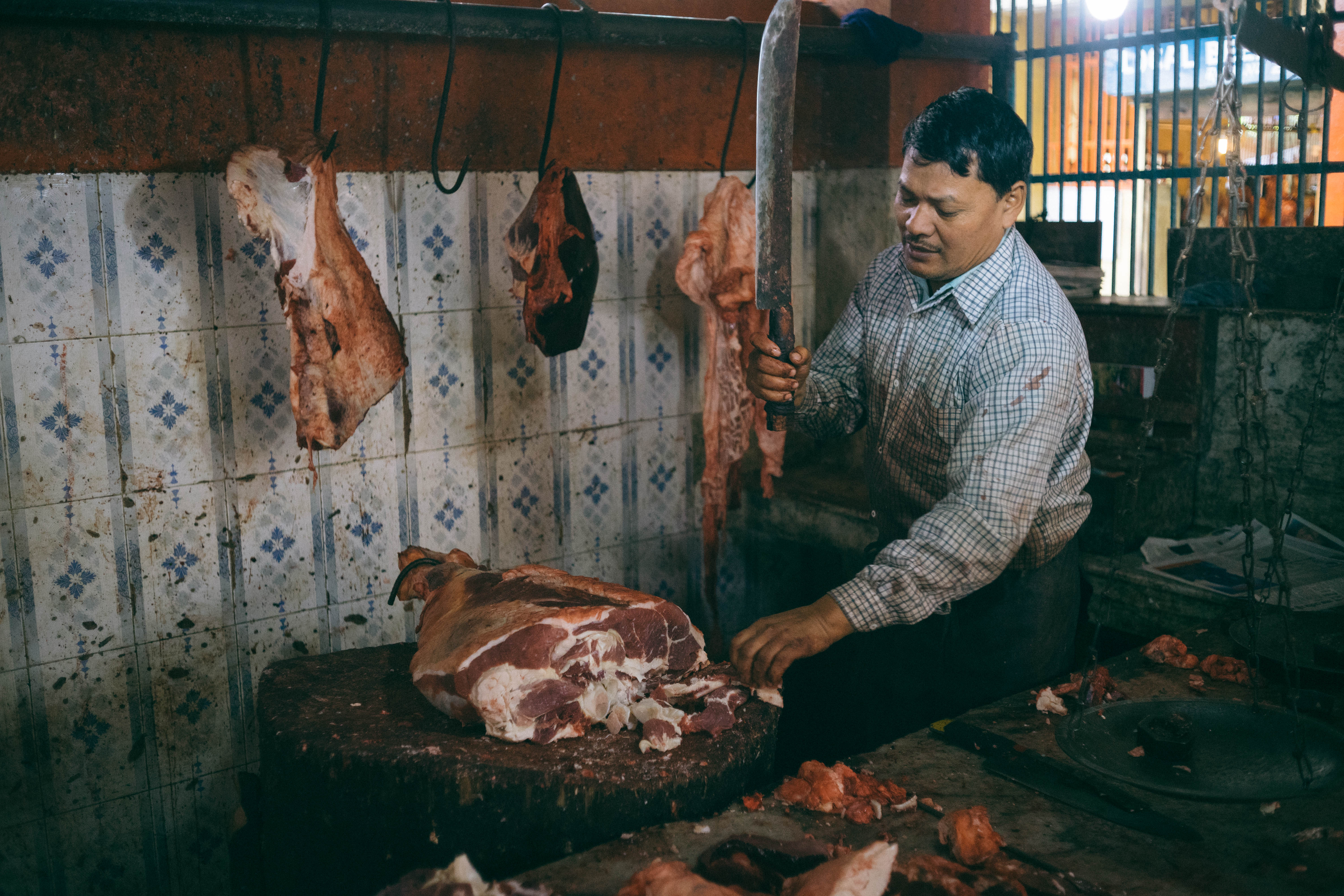
The egg section was felt almost religious. Pious looking men in white pajamas sat crosslegged on high tables surrounded by stacks of eggs and cartons impressively piled by the hundreds to the ceiling. These guys were like the Sandmen of egg dealers. They huddled around old reading lamps without shades, and instead their bulbs topped with little tinfoil hats to protect their eyes while they shine light through the eggs to check for chickens (took me a while to figure that out).

In Varanasi I was wandering around at night and found myself in an alley way crammed with milk traders with fist-fulls of cash for buckets of milk. Every once in a while someone on a bike or motorcycle would cram their way through, get loaded up with several jugs, and slowly carry on through the crowd down the alley.

The bloodiest part was definitely the chicken mongers. They bought chickens in bulk in large hockey puck shaped woven bamboo cages and would spend hours in one spot chopping heads off. In India a lot of stuff is still made of wood, and these guys would have their corner with a wood stool, wood block and wood lattice of some variety with an eternity of blood spray caked on the wall. They were not used to tourists, so they worked with glee when I watched them lop heads off chickens and toss their bodies to in a plastic barrel to flail and soil their feathers until they stopped moving.
Betel nut, a stimulant, is huge here. It’s a major part of agriculture in the north east and is very popular with locals. It’s a little nut you crack apart with a knife, roll it in a leaf smeared with lime paste and chew it. It gets you jacked up like cocaine, your face turns red and you’ll start to sweat and spit red. In many regions you’ll see red splatters on the ground and smears of white lime on the walls. In Meghalaya people would haul sacks full of the stuff out of the jungle and bring it to market. I tried it a few times but it wasn’t really my thing.
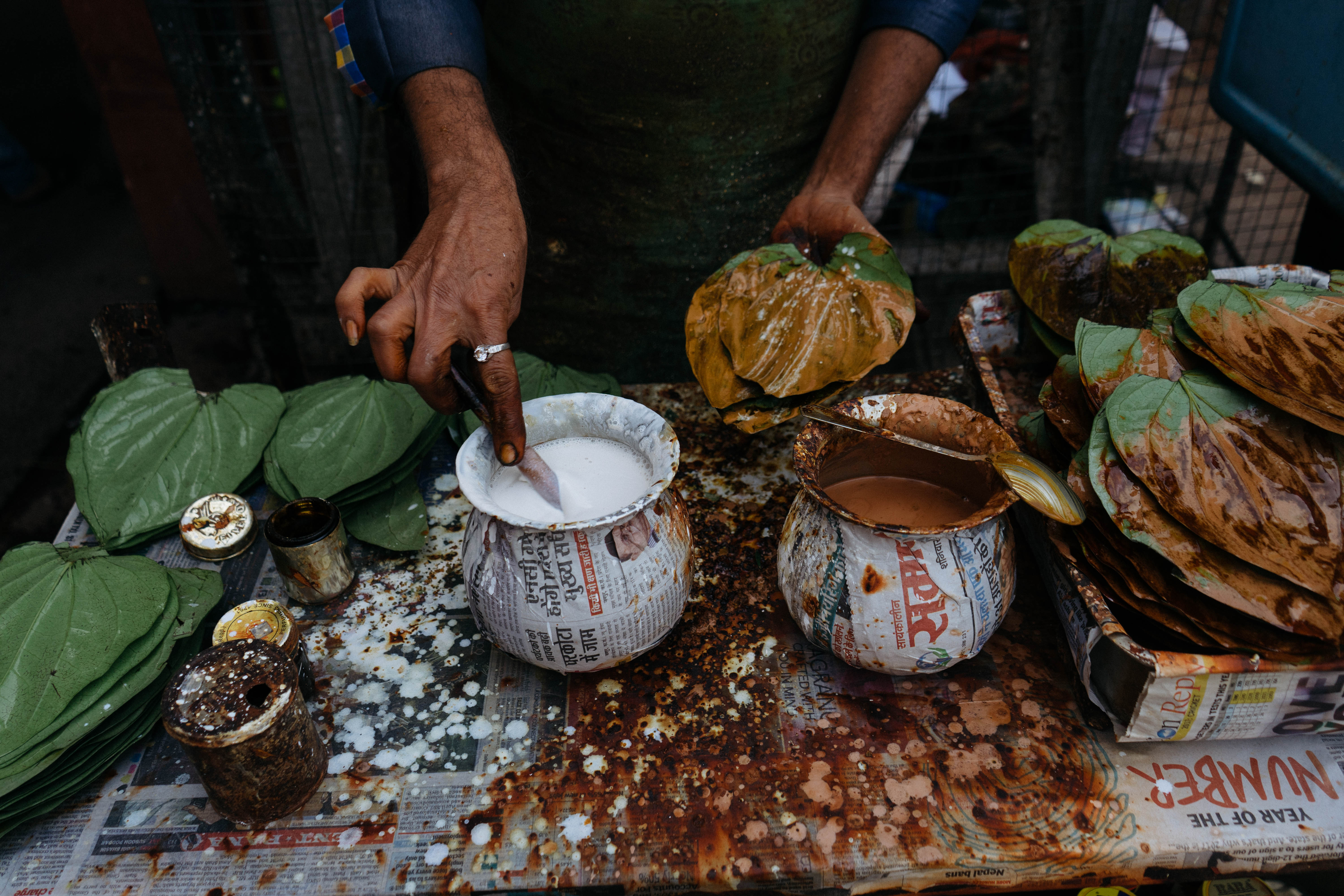
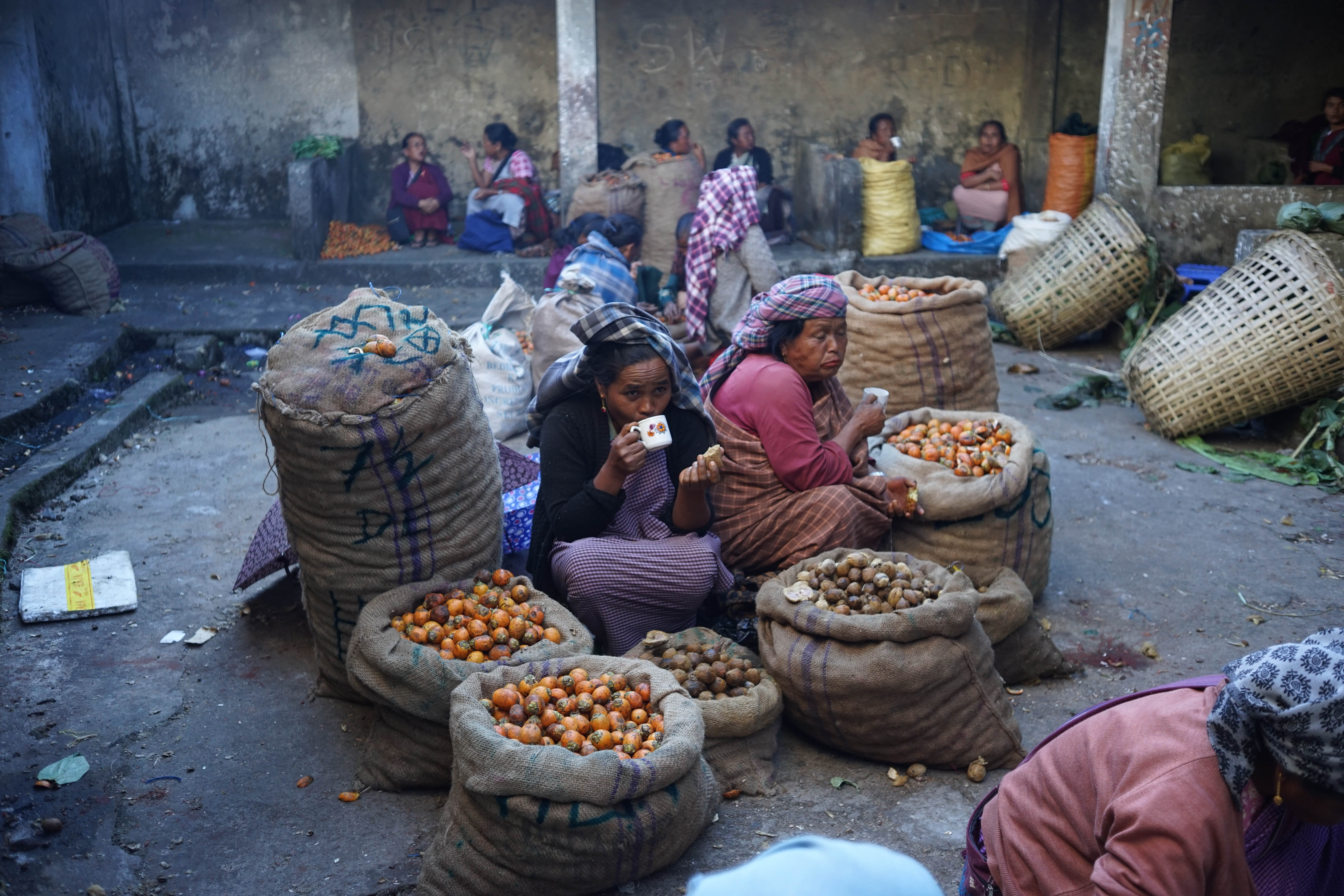
Then of course there’s the Chai. People set up with as little as a can full of charcoal and pot and sell the stuff anywhere. They boil chai tea in milk and ton of sugar and strain it into either an unfired shallow clay bowl—that holds about a mouthful—or a very weak clear plastic cup with the structural integrity of a female condom. You must delicately hang from your finger tips by the rim to prevent it from collapsing. When you’re done with the clay cups you just smash them on the ground like a greek wedding so they were obviously my favorite.
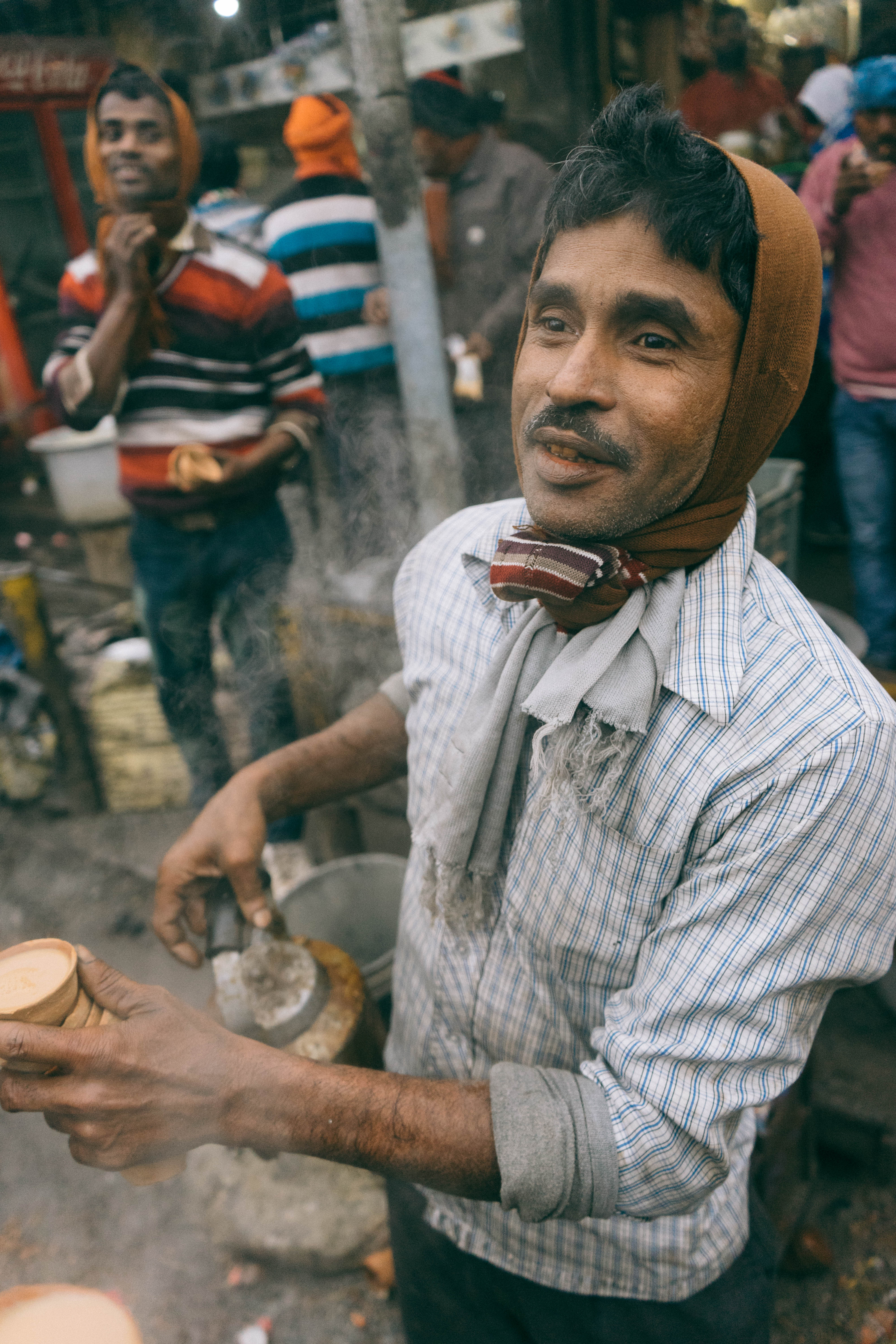
The markets stand out so much because they are so informal. People would find a six inch indentation in a wall, and turn it into a shop stall. It was actually amazing to see what people could do without having to get permits. Have you ever talked to a hotdog vendor in Toronto? Government regulation, although it keeps us safe, makes it almost impossible to get started anywhere. In many countries like India, on the other hand, have far less red tape. Got a soldering iron? you fix phones. Got a sewing machine? you fix clothes.
Stack ‘em high, sell em cheap. When they go to bed they sleep in the stall, and do it all over again tomorrow. Everybody’s a salesman, and the Chai is hot. What’s not to like.
